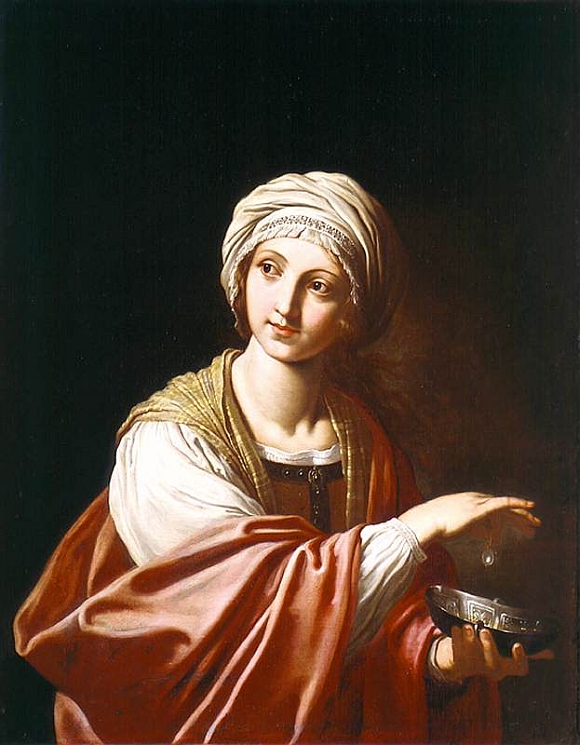
Mark but this flea, and mark in this,
How little that which thou deniest me is ;
It suck’d me first, and now sucks thee,
And in this flea our two bloods mingled be.
Thou know’st that this cannot be said
A sin, nor shame, nor loss of maidenhead ;
Yet this enjoys before it woo,
And pamper’d swells with one blood made of two ;
And this, alas ! is more than we would do.
O stay, three lives in one flea spare,
Where we almost, yea, more than married are.
This flea is you and I, and this
Our marriage bed, and marriage temple is.
Though parents grudge, and you, we’re met,
And cloister’d in these living walls of jet.
Though use make you apt to kill me,
Let not to that self-murder added be,
And sacrilege, three sins in killing three.
Cruel and sudden, hast thou since
Purpled thy nail in blood of innocence?
Wherein could this flea guilty be,
Except in that drop which it suck’d from thee?
Yet thou triumph’st, and say’st that thou
Find’st not thyself nor me the weaker now.
‘Tis true ; then learn how false fears be ;
Just so much honour, when thou yield’st to me,
Will waste, as this flea’s death took life from thee.
—John Donne, The Flea (ca. 1610) in Poems of John Donne, vol. 1, pp. 1-2 (E. K. Chambers ed. 1896)
The flea has an enviable position in literature, especially from the fables of Aesop to the various flea-inspired tales of E.T.A. Hoffmann. Sometime in the later nineteenth century, modern notions of sanitation intervened, and its literary demise began. But its role varies—it is often somewhat comic, reminding man of the frailty of his condition and of the fact that even the tiniest and most unassuming of creatures can afflict him. (Truer than many knew at the time, of course, since we now know that the flea was the principal vehicle for the spread of the Black Death and numerous other plagues). But the peak of the flea as a subject of art must have been in the seventeenth century, when it served as a subject for dozens of significant paintings (by Crespi, Piazzetta, de la Tour and Serani, for instance, whose painting provides a subtly masked sexuality) and became a steady topic of poets and songwriters. From this period, Donne’s poem stands at the unchallenged pinnacle. It’s a poetic tour-de-force, an amazing demonstration of innovation and dexterity. It addresses simultaneously an utterly trivial subject and one which could not be more profound, and its imagery is extremely daring. The voice is also intriguing–it opens with an imperative tone, then turns philosophical, introspective, then it marshals argument for a cause. The voice could just as easily be that of a man or a woman, moreover.
Listen to John Gielgud and Julian Glover read and discuss John Donne’s The Flea in the BBC’s “Six Centuries of Verse: The Metaphysical and Devotional Poets” (1984)
Listen to Andreas Scholl sing John Dowland’s I Saw My Lady Weep from the Second Booke of Songes (1600) from a performance in the Schwetzinger Festspiele. This is a very impressive melding of song and lute; the human voice will inevitably tend to dominate, but the lutenist’s role is absolutely that of a coequal. Dowland and Donne are not merely rough contemporaries, their artistic temperament is very close, and their thematic treatments overlap very closely. This song wells with a strong sense of Elizabethan melancholy, and it presents a very Donne-like paradox in which the lady’s beauty competes with and surmounts the report of her sorrow. It also ends unexpectedly with a fifth, leading many to suppose that it is to be paired with another song, which follows it in the Second Booke, namely, Flow My Tears, probably the best known of all of Dowland’s songs. Scholl’s rendition of that song follows.


